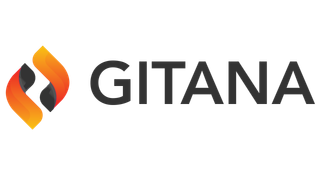Found 553 results for "api content-models overview"
The search executed in 0.002 seconds. That's fast.

|
How do I proxy API calls?Support Article Learn how to proxy API calls through a UI server for authenticated users. Access API resources securely. (Support 1.0)
Score: 3.8904
|

|
Gitana 4.0 / Content Engine / AuthoritiesDocumentation Reference Enhance your Cloud CMS permissions management by leveraging authority-based access control with direct, indirect, and inherited permissions. (Gitana 4.0)
Score: 3.8898
|

|
Gitana 3.2 / Guide / Guide / ActionsDocumentation Reference Explore Cloud CMS Action framework to automate content tasks, trigger emails or webhooks, and more using JSON configuration. (Gitana 3.2)
Score: 3.8824
|

|
Gitana 4.0 / Content Engine / Behaviors / ActionsDocumentation Reference Optimize your Cloud CMS with automated Actions for seamless content handling and workflow enhancement. (Gitana 4.0)
Score: 3.8824
|

|
Gitana 4.0 / Content Engine / Single Sign On (SSO)Documentation Reference Enable seamless access to Cloud CMS with SSO using SAML 2.0 and JWT, integrating with popular identity providers. (Gitana 4.0)
Score: 3.8147
|

|
Gitana 4.0 / Content Engine / WorkflowDocumentation Reference Learn about advanced workflow management with models, instances, tasks, payload resources, events, and more for efficient process automation. (Gitana 4.0)
Score: 3.7275
|

|
Gitana 3.2 / Guide / Guide / Cookbooks / Scripting CookbookDocumentation Reference Enhance server-side scripting skills with practical code samples and guides on updating nodes and managing categories. (Gitana 3.2)
Score: 3.6774
|

|
Gitana 3.2 / Guide / Guide / Cookbooks / JavaScript (Legacy) CookbookDocumentation Reference JavaScript (Legacy) Cookbook: Learn to connect to Gitana and create nodes with the Gitana JavaScript driver. (Gitana 3.2)
Score: 3.6657
|

|
Gitana 3.2 / Guide / Guide / Cookbooks / Ruby CookbookDocumentation Reference Optimize Ruby integration with CloudCMS using our comprehensive guide featuring setup, connection, and code samples. (Gitana 3.2)
Score: 3.6325
|

|
Gitana 3.2 / Guide / Guide / Cookbooks / Node.js CookbookDocumentation Reference Explore Node.js for Cloud CMS with this in-depth guide. Learn connections, queries, and asynchronous chaining techniques. Perfect for developers! (Gitana 3.2)
Score: 3.5259
|

|
Gitana 3.2 / Guide / Guide / Cookbooks / PHP CookbookDocumentation Reference Explore the PHP Cookbook for comprehensive guides on using the Gitana PHP driver with Cloud CMS, including code samples and API interactions. (Gitana 3.2)
Score: 3.4766
|

|
Gitana 3.2 / Guide / Guide / Cookbooks / C# CookbookDocumentation Reference Learn how to get started with the Cloud CMS C# driver, connect repositories, and manage content efficiently. (Gitana 3.2)
Score: 3.3422
|

|
Gitana 3.2 / Guide / Guide / Cookbooks / Python CookbookDocumentation Reference Discover Python Cookbook with step-by-step guides, code samples, and installation tips for Gitana Cloud CMS projects using Python 3. (Gitana 3.2)
Score: 3.2157
|

|
Gitana 3.2 / Guide / Guide / Cookbooks / Java CookbookDocumentation Reference Explore comprehensive Java Cookbook for Gitana Cloud CMS. Learn driver integration, repository setup, and advanced code examples. (Gitana 3.2)
Score: 3.1961
|

|
Gitana 3.2 / Guide / Guide / Cookbooks / JavaScript 2.0 CookbookDocumentation Reference Explore JavaScript 2.0 Cookbook for seamless Cloud CMS integration using async/await, promises, and callbacks. (Gitana 3.2)
Score: 3.1327
|

|
Gitana 3.2 / Guide / Guide / Cookbooks / Go CookbookDocumentation Reference Optimize Go development with guides on setup, Cloud CMS connection, and querying using the Go driver. (Gitana 3.2)
Score: 3.1123
|

|
How to monitor API traffic from a node js appSupport Article Monitor API traffic in your Node.js app using Charles Proxy. Learn to set up reverse proxies for secure, insightful analysis. (Support 1.0)
Score: 3.0211
|

|
How to get a content definition JSON from the Cloud CMS API?Support Article Learn how to retrieve content definition JSONs from Cloud CMS API using node or definition GET calls. (Support 1.0)
Score: 2.6835
|

|
Gitana 3.2 / Guide / Guide / UI Developers Guide / Contexts / deployment-subcontextDocumentation Reference Explore deployment contexts with detailed overviews, properties, API keys, and Amazon SNS for your project applications. (Gitana 3.2)
Score: 2.5056
|

|
Gitana 4.0 / Developers / User Interface Customization / Contexts / deployment-subcontextDocumentation Reference Explore deployment subcontext details, including overview, properties, API keys, and Amazon SNS settings. (Gitana 4.0)
Score: 2.5056
|

|
Gitana 4.0 / User Interface / User Interface / MultilingualDocumentation Reference Easily manage multilingual content with Cloud CMS, supporting translations and locales for master documents. (Gitana 4.0)
Score: 2.1722
|

|
Gitana 3.2 / Guide / Guide / User Interface / MultilingualDocumentation Reference Enable multilingual support on Cloud CMS to manage translations seamlessly, ensuring content is accessible in multiple languages. (Gitana 3.2)
Score: 2.0677
|

|
Quick Start - GitanaWeb Page Quick Start - Gitana Status Releases Support Platform Platform Manage, collaborate, search and distribute your highly-structured content across branches, versions and workflow-driven lifecycle. Cloud CMS Create, Approve and Publish quality content to production on-time. Easy editorial and workflow tools let your best work reach your customers. Automation Automate your content creation and approval flows while taking advantage of AI services to enhance and curate content. Publishing Source and de
Score: 1.6655
|

|
Gitana 3.2 / Guide / Guide / UI Developers Guide / Contexts / task-contextDocumentation Reference Explore task context with comprehensive overviews, properties, history logs, tools, and user comments. (Gitana 3.2)
Score: 1.628
|

|
Gitana 4.0 / Developers / User Interface Customization / Contexts / task-contextDocumentation Reference Explore detailed task overviews, properties, history, comments, and tools with user-specific authority settings. (Gitana 4.0)
Score: 1.628
|
